Setup Your Own Rainwater Harvesting System for an Eco-Garden
Are you tired of watching your water bills climb higher every month while trying to maintain a lush garden? Well, it’s time to take a step towards sustainability and embrace a rainwater harvesting system! This article will guide you through the essentials of establishing a rainwater harvesting system, offering practical tips and insights for creating a sustainable eco-garden that benefits both the environment and your gardening efforts. Imagine a garden that thrives not just on your hard work, but also on nature’s gifts. With a little know-how, you can transform your space into an eco-friendly haven!
Rainwater harvesting is the process of collecting and storing rainwater for future use, and it’s as old as civilization itself. Historically, ancient cultures utilized this method to secure water supplies, especially in arid regions. Fast forward to today, and the concept is more relevant than ever. With increasing urbanization and climate change, sustainable gardening practices are crucial. By capturing rainwater, you’re not just conserving water resources; you’re also reducing your dependency on municipal water systems, which is a win-win for both your wallet and the planet.
Implementing a rainwater harvesting system comes with a myriad of advantages. First and foremost, it can lead to significant cost savings. By using collected rainwater for irrigation, you can reduce your water bills and, in many cases, qualify for government incentives aimed at promoting eco-friendly practices. But the benefits don’t stop there! Here are a few more reasons to consider:
- Environmental Impact: Rainwater harvesting helps in reducing stormwater runoff, which can lead to erosion and pollution. By capturing rainwater, you’re playing a role in enhancing local ecosystems.
- Improving Soil Health: Using harvested rainwater can improve soil quality, as it typically has lower salinity than tap water, promoting healthier plant growth.
Every drop of rain you collect contributes to reducing stormwater runoff, which can overwhelm drainage systems and lead to flooding. By capturing rainwater, you’re not only preventing erosion but also providing a natural water source for plants and wildlife. Think of it as giving back to nature while ensuring your garden thrives!
In many areas, water scarcity is a pressing issue. Rainwater harvesting is a crucial solution, allowing you to conserve precious freshwater resources. Imagine the satisfaction of knowing that your garden is flourishing while you’re actively contributing to the conservation of water in your community.
Let’s face it: saving money is always a plus! By utilizing rainwater for irrigation, you can significantly lower your utility bills. Additionally, many regions offer incentives for installing rainwater harvesting systems, making it an even smarter financial decision.
Using harvested rainwater can enhance soil quality and promote healthier plant growth. Unlike tap water, which often contains chemicals and high salinity, rainwater is pure and nutrient-rich. This means your plants will thank you by growing stronger and more vibrant!
Now that you’re sold on the benefits, let’s dive into the essential components needed for an effective rainwater harvesting system. Think of it as building your garden’s very own water reservoir! The main components include:
- Collection Surfaces: Roofs and other surfaces where rainwater can be captured.
- Storage Tanks: Barrels or cisterns to hold the collected rainwater.
- Filtration Systems: To ensure the water is clean and safe for use.
The type of collection system you choose is crucial. Roofs are the most common collection surfaces, but you can also use patios or driveways. Ensure your gutters are clean and well-maintained to maximize rainwater capture. It’s all about optimizing your setup for the best results!
When it comes to storage, you have options. Rain barrels are great for small gardens, while larger cisterns can hold significant amounts of water. Each option has its pros and cons:
| Storage Option | Pros | Cons |
|---|---|---|
| Rain Barrel | Affordable, easy to install | Limited capacity |
| Cistern | Large capacity, long-term solution | Higher initial cost, requires more space |
Ready to install your rainwater harvesting system? Follow this step-by-step guide to ensure a successful setup. Start with site selection, choosing a location that maximizes rain capture while being accessible for maintenance.
Choosing the ideal location is crucial for your system's efficiency. Consider factors like roof type, rainfall patterns, and ease of access for maintenance. A little planning goes a long way!
Once you’ve selected your site, it’s time to assemble your system. Follow the manufacturer’s instructions closely, and don’t forget about maintenance. Regularly check your gutters, storage tanks, and filtration systems to keep everything running smoothly.
1. Is rainwater safe to use for my garden?
Yes! Rainwater is generally safe for irrigation, but it’s a good idea to filter it to remove debris.
2. How much rainwater can I collect?
The amount depends on your collection surface and local rainfall patterns. A standard roof can collect thousands of gallons annually!
3. Do I need a permit to install a rainwater harvesting system?
This varies by location. Check with your local regulations to ensure compliance.
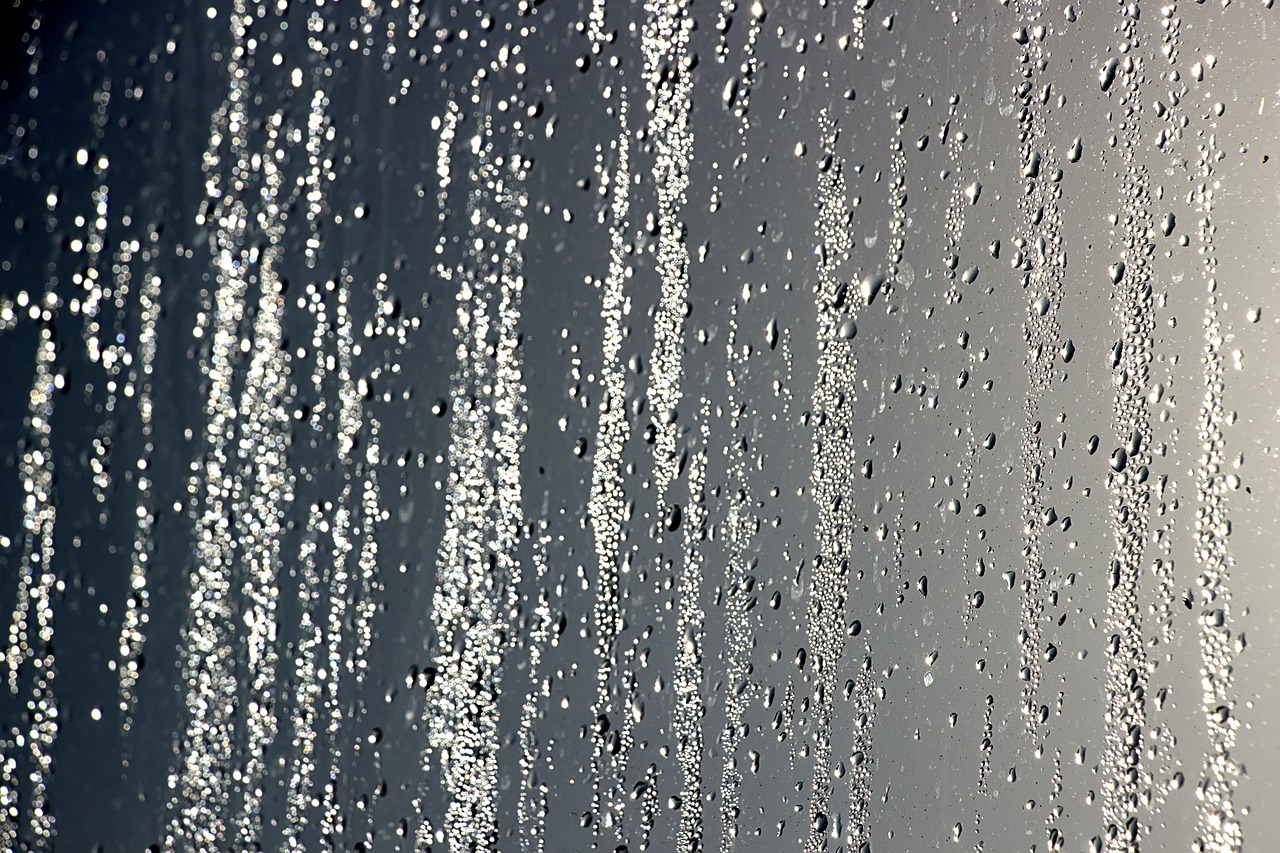
Understanding Rainwater Harvesting
This article will guide you through the essentials of establishing a rainwater harvesting system, offering practical tips and insights for creating a sustainable eco-garden that benefits both the environment and your gardening efforts.
Rainwater harvesting is a practice that has been around for centuries, yet it remains one of the most effective ways to conserve water and promote sustainable gardening. At its core, rainwater harvesting involves collecting and storing rainwater for later use, primarily for irrigation. This method not only provides a reliable water source for your garden but also helps reduce the demand on municipal water supplies, making it a win-win situation for both gardeners and the environment.
The historical significance of rainwater harvesting cannot be overstated. Ancient civilizations, from the Romans to the indigenous peoples of the Americas, recognized the importance of capturing rainwater. They built intricate systems of cisterns and channels to collect and store rain, ensuring they had access to water during dry periods. Today, as we face increasing challenges related to water scarcity and climate change, reviving these ancient practices is more relevant than ever.
Implementing a rainwater harvesting system in your garden can lead to significant benefits. For starters, it conserves valuable freshwater resources, particularly in urban areas where water demand is high. Moreover, it contributes to sustainable gardening practices by providing plants with a natural, chemical-free source of water. Rainwater is often softer than tap water, meaning it contains fewer salts and chemicals, which can be harmful to plants over time. This is crucial for maintaining healthy soil and promoting robust plant growth.
In addition to its environmental benefits, rainwater harvesting plays a vital role in managing stormwater runoff. When rain falls on impervious surfaces like roads and rooftops, it quickly flows into drainage systems, often leading to flooding and erosion. By capturing and utilizing this rainwater, we can significantly reduce the volume of runoff, helping to protect local ecosystems and prevent soil erosion. This not only benefits our gardens but also supports the broader environment, making rainwater harvesting a key component of sustainable living.
In summary, understanding rainwater harvesting is essential for anyone looking to create a sustainable eco-garden. By embracing this age-old practice, you can conserve water, improve soil health, and contribute positively to the environment. Whether you live in a rural setting with abundant rainfall or an urban area facing water restrictions, implementing a rainwater harvesting system can transform your gardening experience and help you become a more responsible steward of our planet's resources.
Discover the numerous advantages of implementing a rainwater harvesting system, including cost savings, reduced water bills, and the positive environmental impact of using collected rainwater for irrigation.
Learn how rainwater harvesting aids in reducing stormwater runoff, preventing erosion, and enhancing local ecosystems by providing a natural water source for plants and wildlife.
Examine how rainwater harvesting plays a crucial role in conserving precious freshwater resources, particularly in areas facing water scarcity or drought conditions.
Understand the financial benefits of rainwater harvesting, including lower utility bills and potential government incentives for installing eco-friendly systems.
Find out how using harvested rainwater can enhance soil quality and promote healthier plant growth by reducing the salinity often associated with tap water.
Get acquainted with the essential components needed for an effective rainwater harvesting system, from collection surfaces to storage tanks and filtration systems.
Delve into the various types of collection systems, such as roofs and gutters, and how to optimize them for maximum rainwater capture.
Explore different storage options, including barrels and cisterns, and their respective pros and cons for maintaining a reliable water supply for your garden.
Follow a step-by-step guide on how to install your rainwater harvesting system, including site selection, component assembly, and best practices for ensuring efficiency and effectiveness.
Learn how to choose the ideal location for your rainwater harvesting system, considering factors like roof type, rainfall patterns, and accessibility for maintenance.
Understand the assembly process of your system and the importance of regular maintenance to ensure longevity and optimal performance of your rainwater harvesting setup.
Q1: Is rainwater safe for watering my garden?
A1: Yes, rainwater is generally safe for watering gardens as it is free from chemicals found in tap water. However, ensure that your collection system is clean and properly maintained.
Q2: How much rainwater can I collect?
A2: The amount of rainwater you can collect depends on the size of your collection area (like your roof) and the average rainfall in your region. A simple formula can help you estimate your potential collection.
Q3: Do I need a permit to install a rainwater harvesting system?
A3: Regulations vary by location, so it's essential to check with your local authorities regarding any permits or guidelines required for installation.
Q4: How do I maintain my rainwater harvesting system?
A4: Regular maintenance includes cleaning gutters, inspecting filters, and checking storage tanks for any debris or contaminants to ensure the system functions effectively.
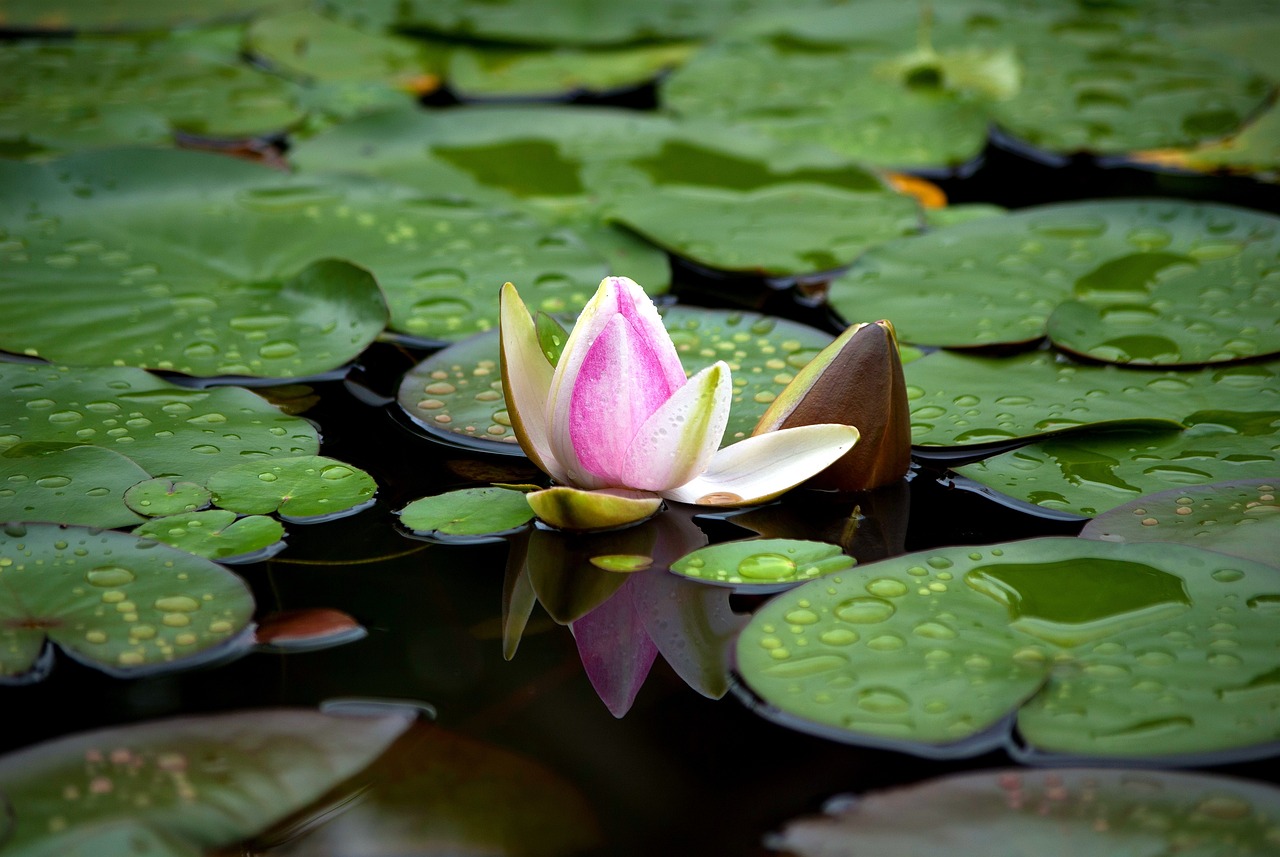
Benefits of Rainwater Harvesting
Rainwater harvesting is not just a trendy buzzword in the world of eco-gardening; it’s a practical approach that offers a plethora of benefits for both your garden and the planet. Imagine being able to capture the free gift of rain and use it to nourish your plants while also saving money and resources. Sounds appealing, right? Well, let’s dive into the myriad advantages that come with setting up your own rainwater harvesting system.
First and foremost, one of the standout benefits is the significant cost savings. By utilizing rainwater for irrigation, you can drastically reduce your reliance on municipal water supplies. This translates to lower water bills, which can be a game-changer for your household budget, especially in regions where water costs are on the rise. Additionally, many local governments offer incentives or rebates for those who invest in eco-friendly systems, which can help offset the initial setup costs.
Beyond the financial perks, rainwater harvesting plays a vital role in environmental conservation. When it rains, a lot of water runs off our roofs and pavements, leading to stormwater runoff that can cause erosion and pollution in local waterways. By capturing this water, we can mitigate these issues and protect our ecosystems. Not only does this practice help replenish groundwater supplies, but it also provides a natural source of water that’s free from the chemicals often found in treated tap water.
The environmental impact extends to improving soil health as well. Rainwater is typically softer than tap water, meaning it has a lower concentration of salts and chemicals. This is crucial for maintaining healthy soil, as excessive salinity can harm plants and disrupt microbial activity. When you use harvested rainwater, you’re not just feeding your plants; you’re also nurturing the soil they grow in. Healthier soil leads to stronger plants, which in turn can lead to a more vibrant and productive garden.
Furthermore, rainwater harvesting encourages a sustainable lifestyle. By relying on a natural resource, you’re actively participating in a cycle that promotes conservation and environmental stewardship. It’s like having your own little eco-system right in your backyard! You’re not just growing plants; you’re contributing to the health of your local environment, which can inspire others in your community to follow suit. Imagine the ripple effect of one small action leading to a collective movement towards sustainability.
In summary, the benefits of rainwater harvesting are multifaceted. From saving money and conserving precious water resources to enhancing soil health and promoting sustainability, the advantages are clear. It’s not just about collecting water; it’s about making a positive impact on your garden and the world around you. So, why not take the plunge and embrace this eco-friendly practice? Your garden (and your wallet) will thank you!
- What is rainwater harvesting? Rainwater harvesting is the process of collecting and storing rainwater for various uses, primarily irrigation.
- Is rainwater safe to use for gardening? Yes, rainwater is generally safe for gardening as it is free from the chemicals found in municipal water.
- How much money can I save with rainwater harvesting? Savings vary, but many homeowners report a noticeable decrease in their water bills, especially during dry seasons.
- Do I need a permit to install a rainwater harvesting system? Regulations vary by location, so it’s best to check with your local authorities before installation.
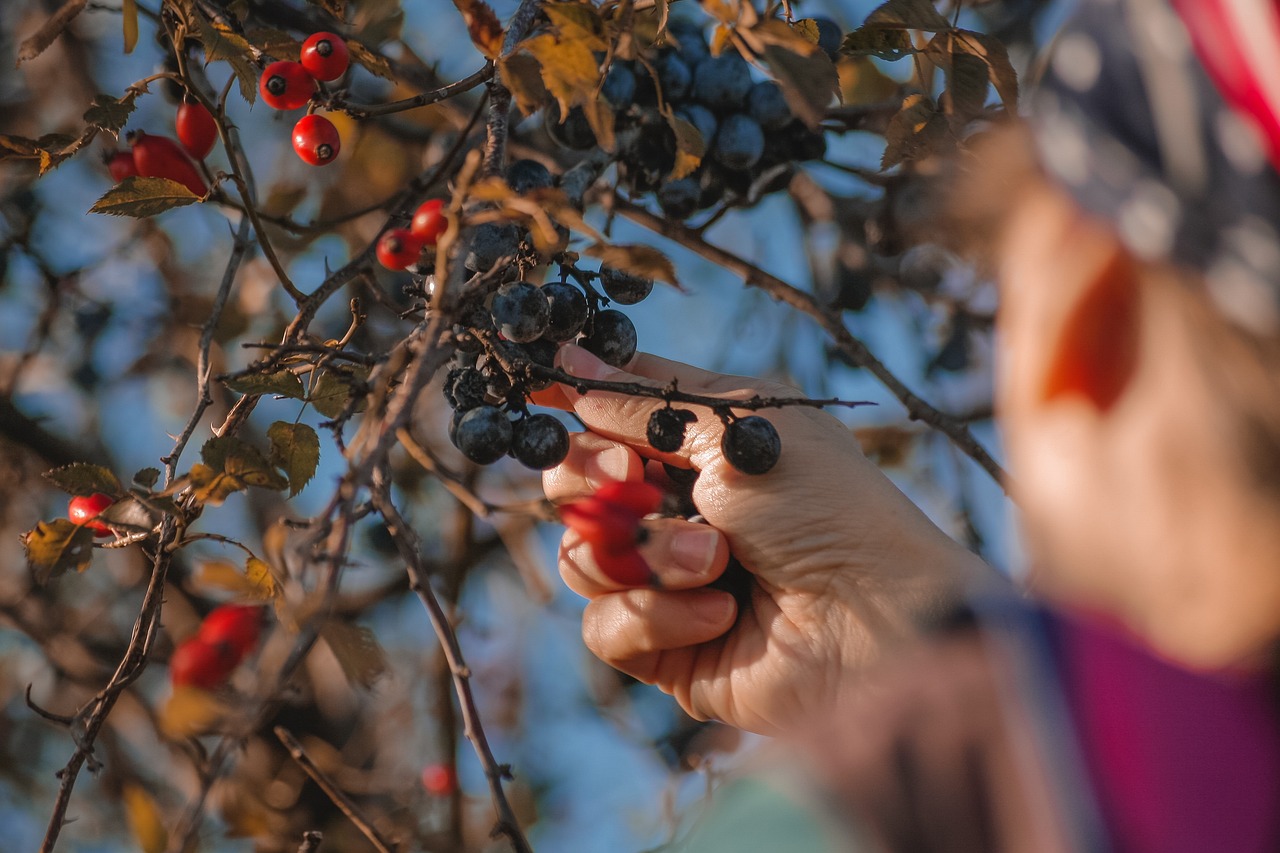
Environmental Impact
Rainwater harvesting isn't just a trend; it's a powerful tool for environmental stewardship. By capturing and utilizing rainwater, we can significantly reduce stormwater runoff, which is a major contributor to urban flooding and water pollution. When rain falls on hard surfaces like roads and rooftops, it picks up pollutants such as oil, heavy metals, and debris, which then wash into local waterways. This not only degrades water quality but also harms aquatic ecosystems. By implementing a rainwater harvesting system, we can mitigate these issues by redirecting rainwater for irrigation instead of letting it flow into drains and sewers.
Moreover, rainwater harvesting plays a crucial role in preventing soil erosion. When rainwater is allowed to flow freely over land, it can wash away topsoil, which is essential for healthy plant growth. By collecting rainwater, we can reduce the amount of water that directly impacts the soil, thus minimizing erosion and preserving the land's integrity. This is particularly important in areas prone to heavy rainfall or in regions where the landscape is already vulnerable due to agricultural practices or deforestation.
Another significant benefit of rainwater harvesting is its positive contribution to local ecosystems. When we use collected rainwater for our gardens, we provide a natural source of hydration for plants and wildlife. This is especially beneficial in urban areas where green spaces are limited. By creating a sustainable water source, we help maintain biodiversity and support local flora and fauna. For instance, using rainwater can promote the growth of native plants that are adapted to the local climate, which in turn attracts pollinators and other wildlife.
Additionally, rainwater harvesting can help replenish groundwater supplies. By allowing rainwater to infiltrate the ground rather than running off, we enable it to percolate through the soil and recharge aquifers. This is particularly vital in regions facing water scarcity or those experiencing prolonged droughts. By investing in a rainwater harvesting system, we not only secure our water supply but also contribute to the overall health of our environment.
In summary, the environmental impact of rainwater harvesting is profound. It reduces stormwater runoff, prevents soil erosion, supports local ecosystems, and replenishes groundwater. By adopting this sustainable practice, we can all play a part in protecting our planet and ensuring a healthier future for generations to come.
- What is rainwater harvesting? Rainwater harvesting is the process of collecting and storing rainwater for later use, primarily for irrigation and other non-potable uses.
- Is rainwater safe to use for gardening? Yes, rainwater is generally safe for gardening as it is free from the chemicals often found in tap water, such as chlorine and fluoride.
- How much rainwater can I collect? The amount of rainwater you can collect depends on the size of your collection surface (like your roof) and the average rainfall in your area.
- Do I need a special permit to install a rainwater harvesting system? This varies by location. It's best to check with your local government for regulations regarding rainwater harvesting.

Conserving Water Resources
In today's world, where water scarcity is becoming an increasingly pressing issue, is more important than ever. Implementing a rainwater harvesting system is not just a sustainable choice; it’s a critical step towards ensuring that our precious freshwater resources are managed wisely. Imagine a world where every drop counts, where we can harness the power of nature to meet our gardening needs without depleting our local water supply. This is the essence of rainwater harvesting.
When you set up a rainwater harvesting system, you're not just collecting water; you're actively participating in a larger movement towards sustainability. By capturing rainwater, you reduce your reliance on municipal water systems, which often draw from limited freshwater sources. This is especially vital in regions prone to drought or where water resources are already stretched thin. For instance, consider the following benefits of rainwater harvesting in conserving water:
- Reduction in Demand on Groundwater: By utilizing harvested rainwater, you lessen the demand for groundwater extraction, allowing aquifers to replenish naturally.
- Enhanced Water Quality: Rainwater is typically cleaner than surface water, making it an excellent resource for irrigation without the contaminants often found in treated water.
- Mitigation of Urban Runoff: Capturing rainwater helps reduce stormwater runoff, which can lead to flooding and erosion, thereby protecting local ecosystems.
Moreover, rainwater harvesting can play a significant role in community resilience. As cities grow and populations increase, the pressure on water resources intensifies. By adopting rainwater harvesting practices, individuals and communities can create a buffer against water shortages. It’s like having a safety net that catches the rain and stores it for a sunny day.
In addition to these environmental benefits, rainwater harvesting systems can be tailored to fit any garden size or style. Whether you have a sprawling backyard or a compact urban balcony, there are solutions available that can help you conserve water effectively. By integrating these systems into your gardening practices, you not only promote sustainability but also encourage others in your community to follow suit.
In summary, conserving water resources through rainwater harvesting is a win-win situation. It empowers you to take control of your water usage, supports local ecosystems, and contributes to a more sustainable future. So, as you embark on your journey to create an eco-garden, remember that every rain droplet collected is a step towards a greener planet.
Q: How much water can I collect from my roof?
A: The amount of water you can collect depends on the size of your roof and the average rainfall in your area. For example, a 1,000 square foot roof can yield approximately 600 gallons of water from just one inch of rain.
Q: Is rainwater safe for gardening?
A: Yes, rainwater is generally safe for irrigation. It is free from the chemicals found in tap water, such as chlorine, making it better for your plants.
Q: How do I maintain my rainwater harvesting system?
A: Regular maintenance includes cleaning gutters and filters, checking for leaks, and ensuring that storage tanks are properly sealed to prevent contamination.
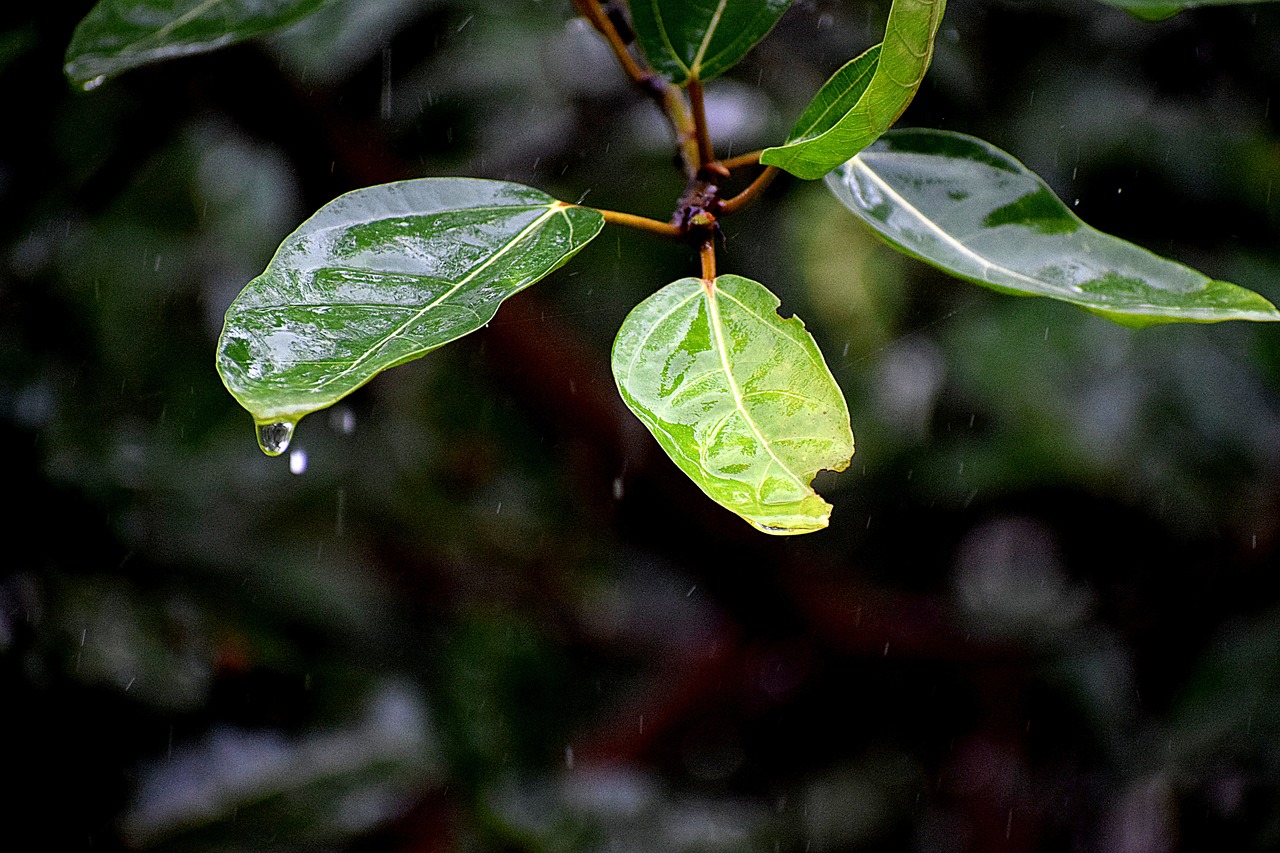
Cost Savings
Implementing a rainwater harvesting system in your eco-garden can lead to significant over time. Imagine reducing your water bills by capturing and utilizing the natural rainfall that falls right on your roof! This not only helps your garden thrive but also puts money back in your pocket. With the rising costs of municipal water, every drop counts. By using harvested rainwater for irrigation, you can cut down on your dependency on expensive tap water, which can be particularly beneficial during the hot summer months when water usage spikes.
Moreover, many local governments recognize the environmental benefits of rainwater harvesting and offer incentives to encourage homeowners to adopt these systems. These incentives may come in the form of tax credits, subsidies, or even rebates on the purchase of rain barrels and other components necessary for your setup. This means that the initial investment in your rainwater harvesting system can be significantly offset by these financial aids.
To give you a clearer picture, let’s break down some potential savings:
| Expense Category | Traditional Water Supply | With Rainwater Harvesting | Estimated Savings |
|---|---|---|---|
| Monthly Water Bill | $50 | $20 | $30 |
| Annual Water Bill | $600 | $240 | $360 |
| Government Incentives | N/A | - $100 | - $100 |
As illustrated in the table above, switching to a rainwater harvesting system can lead to a substantial reduction in your annual water expenses. Not only will you save on monthly bills, but you can also benefit from government incentives that make the transition even more financially appealing.
In addition to direct savings on water costs, consider the long-term benefits of maintaining a healthy garden without the need for chemical-laden municipal water. Using rainwater can improve the quality of your plants and soil, leading to a more productive garden, which can translate into savings on fertilizers and plant replacements. So, not only are you saving money, but you're also contributing to a healthier ecosystem.
In conclusion, the cost savings associated with rainwater harvesting are not only immediate but also compound over time. By investing in this sustainable practice, you are making a smart financial decision that benefits both your wallet and the environment. Why not take the plunge? Your garden and your bank account will thank you!
- What is rainwater harvesting? Rainwater harvesting is the collection and storage of rainwater for reuse, typically for irrigation and other non-potable uses.
- How much can I save with a rainwater harvesting system? Savings can vary based on your water usage, but many homeowners report annual savings of hundreds of dollars.
- Are there any maintenance costs associated with rainwater harvesting? While there are some maintenance costs, they are generally low, especially compared to the savings on water bills.
- Can I drink harvested rainwater? It is generally advised to treat rainwater before consuming it, as it may contain contaminants.
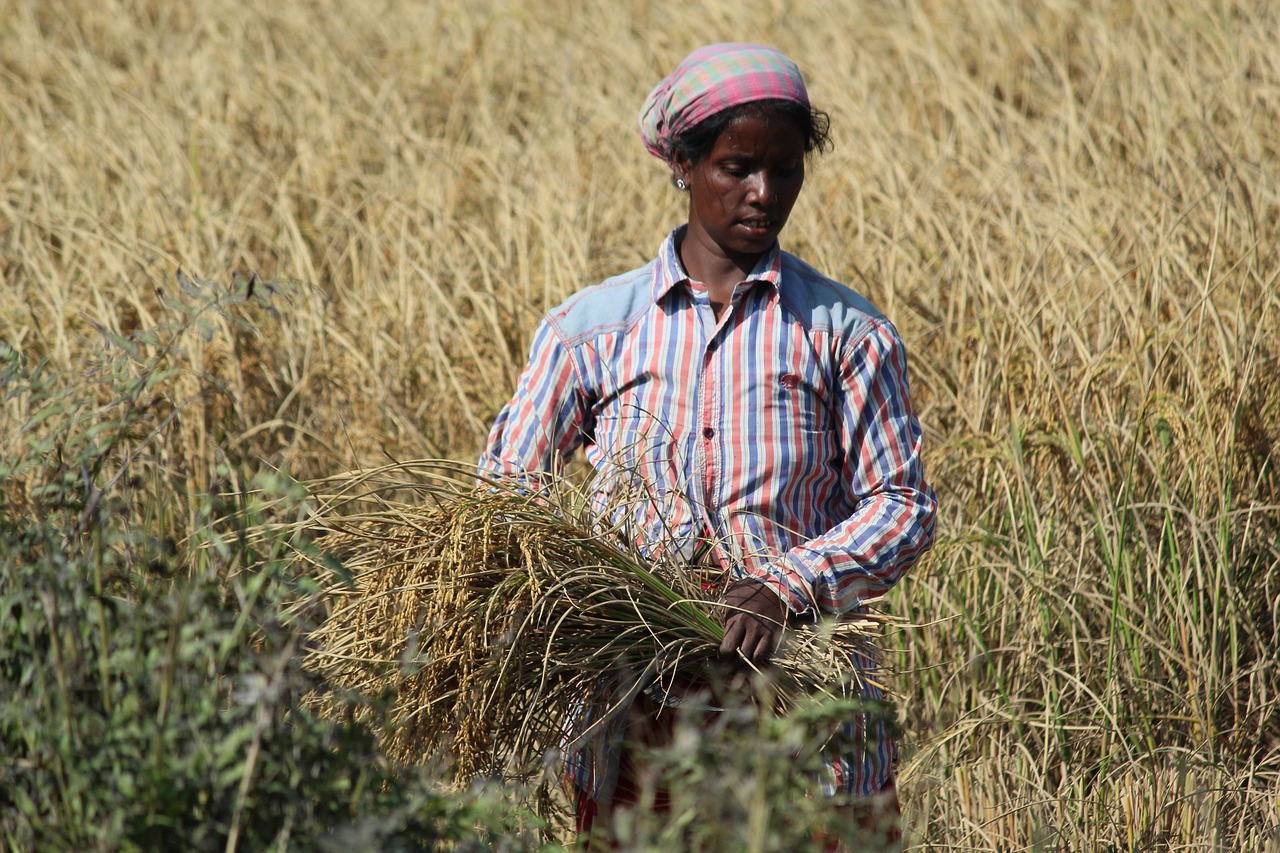
Improving Soil Health
When it comes to gardening, the health of your soil is paramount. It’s like the foundation of a house; without a solid base, everything else can crumble. Utilizing harvested rainwater can significantly enhance soil quality, creating a thriving ecosystem in your garden. One of the most notable benefits of rainwater is its low salinity compared to tap water. Tap water often contains various minerals and chemicals, which can accumulate over time and negatively affect soil health. In contrast, rainwater is pure and free from these additives, making it an ideal choice for irrigation.
Moreover, rainwater harvesting encourages a more natural irrigation method. When you use rainwater, you’re mimicking the way nature intended plants to receive moisture. This process not only helps in maintaining optimal moisture levels but also promotes the growth of beneficial microorganisms in the soil. These microorganisms play a critical role in breaking down organic matter and releasing nutrients that plants need to thrive. Think of them as tiny gardeners working tirelessly beneath the surface!
Another essential aspect to consider is the pH balance of your soil. Rainwater typically has a neutral pH, which means it can help to balance out overly acidic or alkaline soils. By using rainwater for irrigation, you can maintain a healthier pH level, which is crucial for nutrient absorption by plants. When the pH is just right, plants can access essential nutrients more effectively, leading to stronger, healthier growth.
In addition to these benefits, rainwater harvesting can also improve soil structure. When you consistently water your garden with rainwater, you promote better drainage and aeration in the soil. This is particularly important for preventing compaction, which can hinder root development and water infiltration. A well-aerated soil allows roots to spread out, accessing more nutrients and moisture, which ultimately leads to a more robust garden.
To summarize, here are some key ways in which rainwater harvesting improves soil health:
- Reduces Salinity: Low salinity levels prevent the buildup of harmful minerals.
- Encourages Beneficial Microorganisms: Promotes a thriving ecosystem of microorganisms.
- Maintains pH Balance: Neutral pH helps in nutrient absorption.
- Enhances Soil Structure: Improves drainage and aeration for healthier roots.
By integrating rainwater into your gardening practices, you’re not just nurturing your plants; you’re also fostering a sustainable environment that benefits the entire ecosystem. So, next time it rains, remember that you’re not just collecting water; you’re nurturing the very foundation of your garden!
1. Is rainwater safe for all types of plants?
Yes, rainwater is generally safe for all types of plants as it is free from the chemicals found in tap water. However, always ensure that your collection system is clean and properly maintained.
2. How can I store rainwater effectively?
Using barrels or cisterns is a great way to store rainwater. Ensure that your storage containers are covered to prevent mosquito breeding and contamination.
3. Can I use rainwater for indoor plants?
Absolutely! Rainwater is an excellent choice for indoor plants as it provides them with the nutrients they need without the harmful chemicals.
4. How often should I water my garden with rainwater?
The frequency depends on your local climate and rainfall patterns. It's essential to monitor the soil moisture and water accordingly.
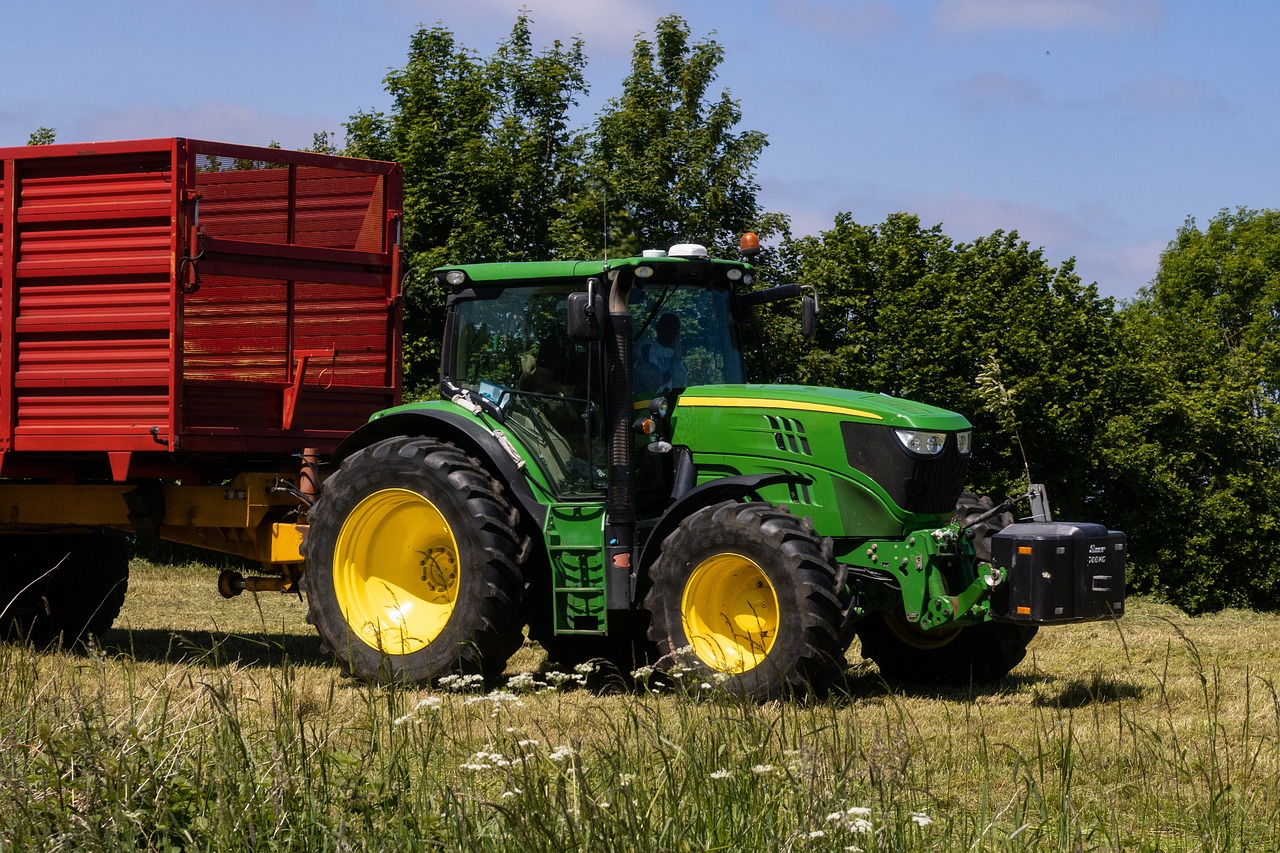
Components of a Rainwater Harvesting System
This article will guide you through the essentials of establishing a rainwater harvesting system, offering practical tips and insights for creating a sustainable eco-garden that benefits both the environment and your gardening efforts.
Explore the fundamental concept of rainwater harvesting, its historical significance, and how it contributes to sustainable gardening practices while conserving water resources in urban and rural settings.
Discover the numerous advantages of implementing a rainwater harvesting system, including cost savings, reduced water bills, and the positive environmental impact of using collected rainwater for irrigation.
Learn how rainwater harvesting aids in reducing stormwater runoff, preventing erosion, and enhancing local ecosystems by providing a natural water source for plants and wildlife.
Examine how rainwater harvesting plays a crucial role in conserving precious freshwater resources, particularly in areas facing water scarcity or drought conditions.
Understand the financial benefits of rainwater harvesting, including lower utility bills and potential government incentives for installing eco-friendly systems.
Find out how using harvested rainwater can enhance soil quality and promote healthier plant growth by reducing the salinity often associated with tap water.
To successfully set up a rainwater harvesting system, it’s essential to understand its key components. Each part plays a vital role in ensuring that the system functions efficiently and effectively. The primary components include:
- Collection Surfaces: These are the surfaces where rainwater is collected, typically rooftops. The material of the roof can impact the water quality, so it's important to use non-toxic materials.
- Gutters and Downspouts: These direct the rainwater from the roof to the storage tank. Proper installation and maintenance are crucial to prevent leaks and blockages.
- Filtration Systems: Before the rainwater enters the storage tank, it should be filtered to remove debris and contaminants. This can include mesh screens or first-flush diverters that ensure the cleanest water is collected.
- Storage Tanks: These are essential for holding the harvested rainwater. Options range from simple barrels to larger cisterns, and the choice depends on your garden's needs and available space.
Each of these components works together to create a seamless system that captures and stores rainwater for later use. For example, the collection surface, often your roof, channels the rainwater through gutters and downspouts, which then leads to the filtration system. This process is crucial because it ensures that the water is clean and safe for your plants. Once filtered, the water is stored in tanks, ready to be used whenever your garden needs it.
When selecting storage tanks, consider factors such as size, material, and location. A larger tank can store more water, but it also requires more space and might involve higher initial costs. On the other hand, smaller barrels are more affordable and easier to manage but may not hold enough water during dry spells. Additionally, ensure that your tanks are made of food-grade materials to prevent leaching harmful chemicals into the water.
Follow a step-by-step guide on how to install your rainwater harvesting system, including site selection, component assembly, and best practices for ensuring efficiency and effectiveness.
Learn how to choose the ideal location for your rainwater harvesting system, considering factors like roof type, rainfall patterns, and accessibility for maintenance.
Understand the assembly process of your system and the importance of regular maintenance to ensure longevity and optimal performance of your rainwater harvesting setup.
Q: Is rainwater safe for gardening?
A: Yes, rainwater is generally safe for gardening as long as it is collected from clean surfaces and properly filtered.
Q: How much rainwater can I collect?
A: The amount of rainwater you can collect depends on your roof size and the average rainfall in your area. A larger roof can yield significantly more water.
Q: Do I need a permit to install a rainwater harvesting system?
A: Requirements vary by location, so it's best to check with your local government to see if permits are necessary.
Q: How often should I clean my rainwater system?
A: Regular maintenance is key. Clean your gutters and filters at least twice a year, and inspect your storage tanks for algae or sediment buildup.
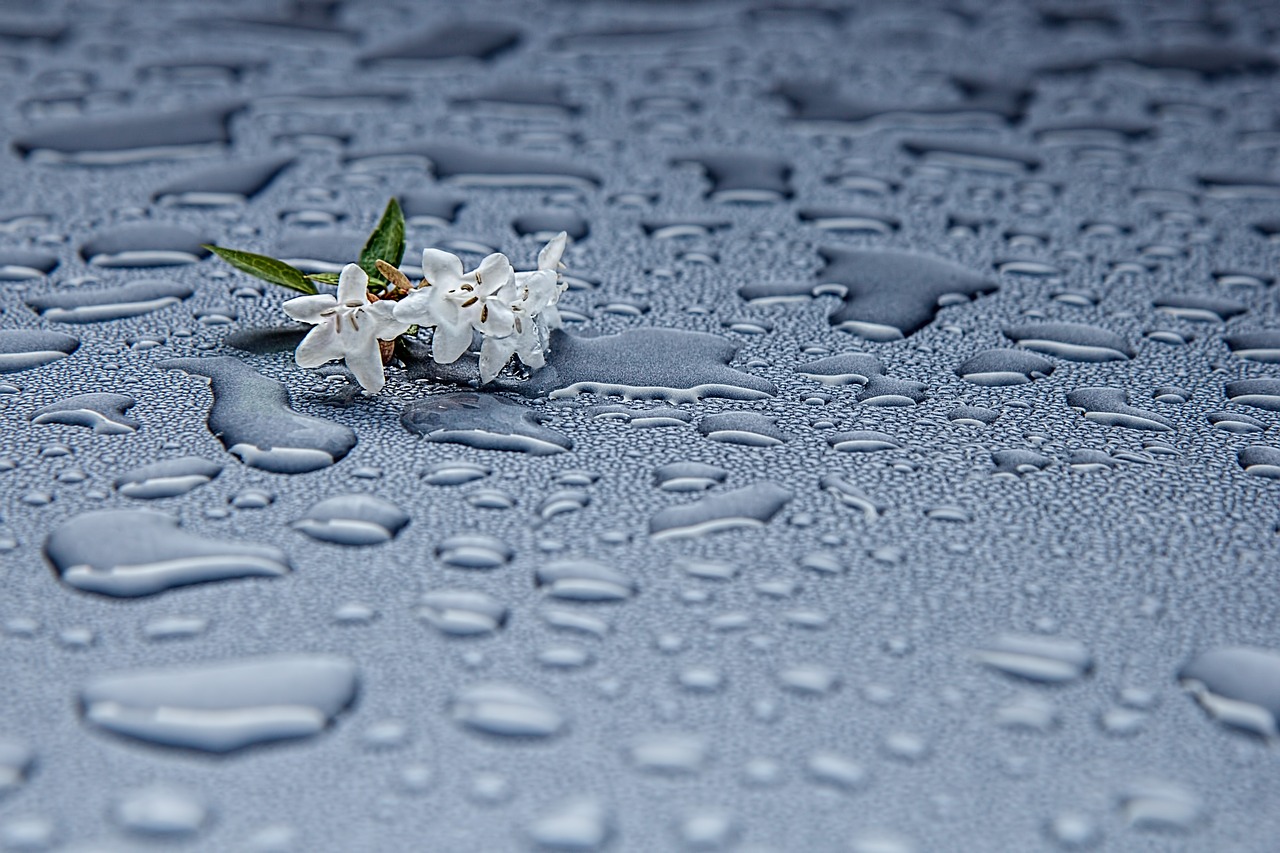
Collection Systems
When it comes to setting up your rainwater harvesting system, the collection system is the vital first step. Think of it as the gateway to your eco-garden's water supply. The primary goal here is to efficiently capture rainwater from various surfaces, which typically means utilizing your roof and gutters. But why stop there? You can also consider other surfaces like driveways, patios, and even specialized catchment areas designed to funnel water into your system. This is where the magic begins, as every drop counts!
Roofs are the most common collection surfaces, and for good reason. They offer a large area for rain to fall and can be easily directed into gutters. However, not all roofs are created equal. The materials used can affect the quality of the water collected. For instance, metal roofs are generally preferred because they are easier to clean and do not leach harmful chemicals into the water. In contrast, roofs made from asphalt shingles may release some contaminants. It’s crucial to consider the material of your roof when planning your collection system.
Gutters play a significant role in directing rainwater from the roof to your storage tanks. Installing a proper gutter system will ensure that water flows smoothly without any blockages. Make sure to include downspouts that lead directly into your storage containers. Additionally, incorporating leaf guards or mesh screens can prevent debris from entering your system, keeping your water clean and ready for use.
But let’s not forget about the diversion systems. These are essential for directing the initial flow of rainwater away from your storage tanks to avoid contamination from roof debris and pollutants. A simple first-flush diverter can be a game-changer. It works by capturing the first few gallons of rainwater, which often contain dirt, leaves, and other contaminants, ensuring that only cleaner water enters your storage system.
To give you a clearer idea of the components involved in a collection system, here’s a quick overview:
| Component | Description |
|---|---|
| Roof | The primary collection surface; should be made of non-toxic materials. |
| Gutters | Channels that direct water from the roof to the storage tank. |
| Downspouts | Vertical pipes that carry water from gutters to the storage system. |
| First-Flush Diverter | A device that diverts the initial dirty water away from the storage tank. |
In summary, a well-designed collection system is the backbone of your rainwater harvesting setup. By carefully selecting your collection surfaces and ensuring proper installation of gutters and diversion systems, you can maximize the amount of rainwater you capture. This not only benefits your eco-garden but also contributes to a more sustainable approach to gardening, making every drop of rain count!
- What type of roof is best for rainwater harvesting? Metal roofs are generally preferred due to their clean surface and durability.
- How do I maintain my collection system? Regularly clean your gutters and check for any blockages in downspouts and filters.
- Can I use rainwater for drinking? Yes, but it requires proper filtration and treatment to ensure safety.
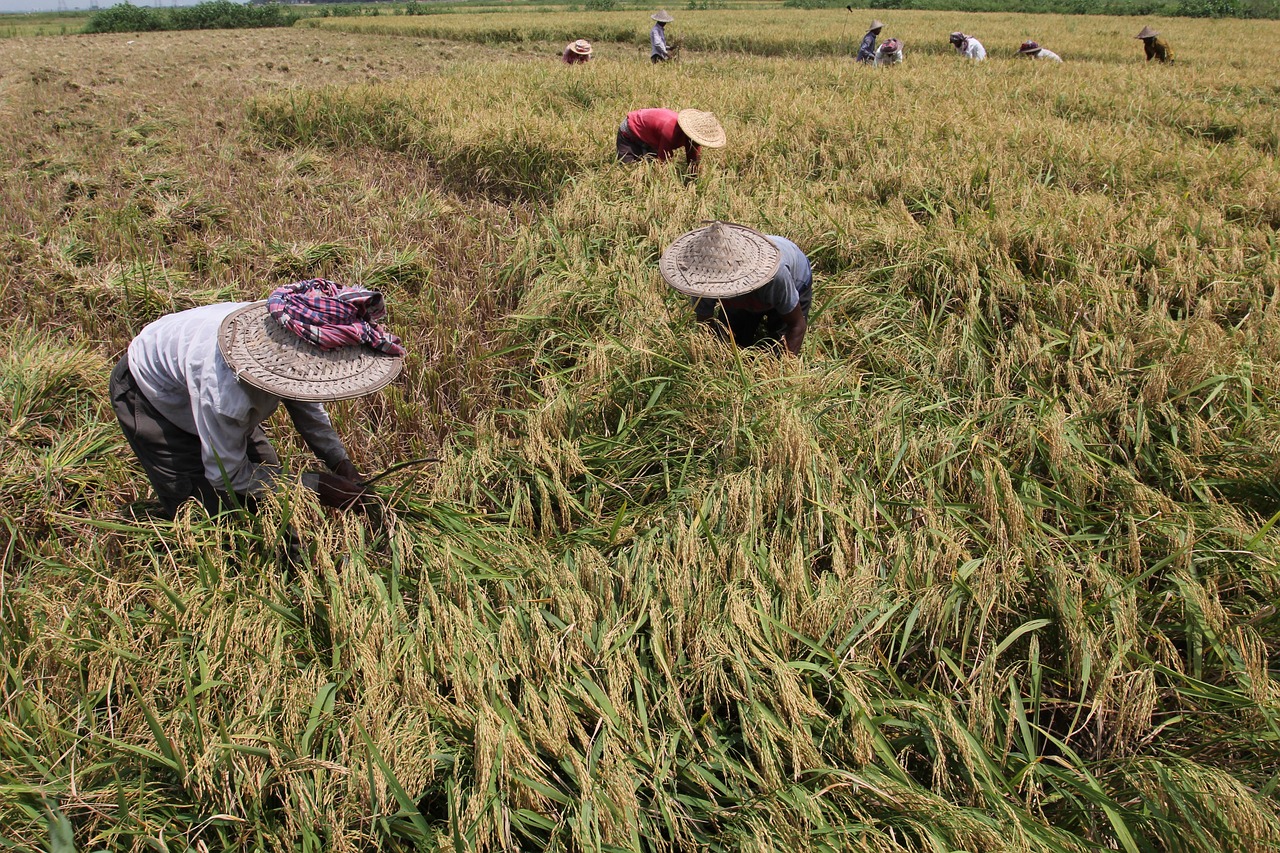
Storage Solutions
When it comes to setting up a rainwater harvesting system, choosing the right storage solution is crucial for ensuring you have a reliable supply of water for your eco-garden. There are various options available, each with its own set of advantages and disadvantages. Understanding these can help you make an informed decision that best suits your gardening needs and environmental goals.
One of the most common storage solutions is the rainwater barrel. These barrels are typically made from plastic or metal and can hold anywhere from 50 to 100 gallons of water. They are often easy to install and can be placed directly under a downspout to catch rainwater as it flows off your roof. However, while they are affordable and versatile, they may not provide enough capacity for larger gardens or during extended dry spells.
On the other hand, cisterns offer a more robust solution for those looking to store larger volumes of rainwater. These can be made from materials like concrete, fiberglass, or polyethylene and can hold thousands of gallons. Cisterns can be installed above or below ground, making them a flexible option for different garden setups. However, the initial installation costs can be higher, and they often require more maintenance to keep water clean and free from contaminants.
To help you visualize the differences between these storage solutions, here’s a simple comparison table:
| Storage Solution | Capacity | Material | Installation Cost | Maintenance |
|---|---|---|---|---|
| Rain Barrel | 50-100 gallons | Plastic/Metal | Low | Low |
| Cistern | Thousands of gallons | Concrete/Fiberglass/Polyethylene | High | Moderate to High |
Another factor to consider is the location of your storage solution. If you opt for barrels, placing them in a shaded area can help reduce algae growth and keep the water cooler, which is beneficial for plant health. For cisterns, ensure they are easily accessible for maintenance and that the surrounding area is clear of debris that could contaminate the water supply.
In addition to barrels and cisterns, there are also bladder tanks and rainwater tanks available. Bladder tanks are flexible, collapsible containers that can fit into tight spaces, while rainwater tanks are often larger, rigid tanks designed for long-term storage. Each of these options has its unique benefits, and your choice should align with your garden's specific requirements and your budget.
Ultimately, the right storage solution for your rainwater harvesting system will depend on your specific needs, the size of your garden, and the amount of rainfall you typically receive. By carefully considering these factors and weighing the pros and cons of each option, you can create an efficient and effective system that supports your eco-garden while conserving precious water resources.
- How much rainwater can I collect? The amount of rainwater you can collect depends on your roof size and the amount of rainfall in your area. A general rule of thumb is that 1 inch of rain on a 1,000 square foot roof can yield approximately 600 gallons of water.
- Do I need a filter for my rainwater storage? Yes, using a filter is recommended to keep debris and contaminants out of your storage system, ensuring the water remains clean and safe for use.
- Can I use harvested rainwater for drinking? While it is possible to treat rainwater for drinking, it typically requires a more advanced filtration and purification system. For most home gardens, it's best used for irrigation.
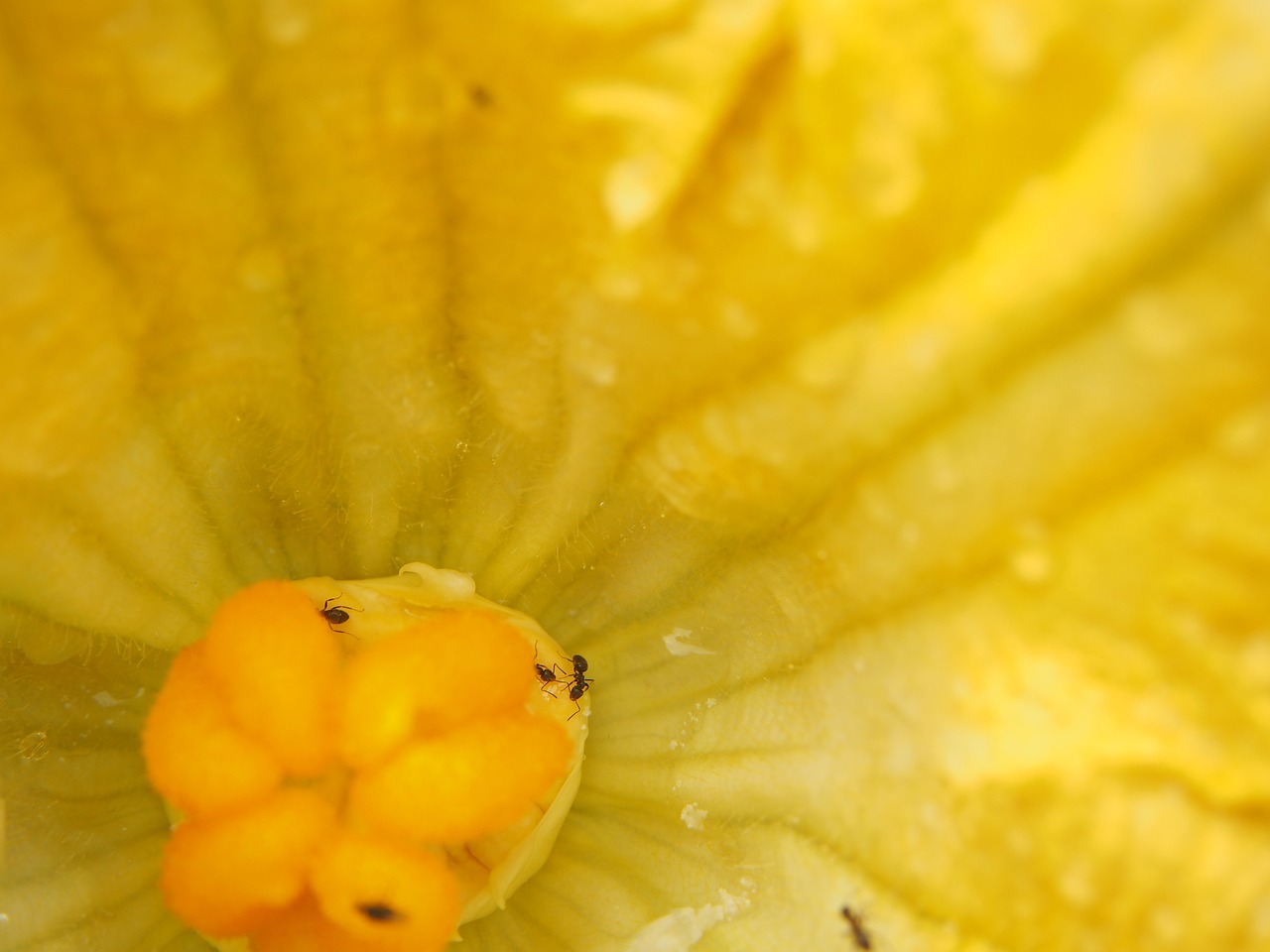
Installation Process
Setting up your own rainwater harvesting system might sound daunting, but don’t worry! It’s easier than you think, and I’m here to guide you through the process step by step. First things first, you need to understand that the key to a successful installation lies in proper planning and execution. So, let’s roll up our sleeves and dive into the nitty-gritty of creating your eco-friendly oasis.
Before you start installing, site selection is crucial. You want to pick a location that maximizes your rainwater collection. Ideally, your collection surface should be a roof that’s in good condition and free from contaminants. Consider the rainfall patterns in your area—if you live in a region with sporadic showers, you might want to install a larger storage system to capture as much water as possible during those brief downpours. Additionally, ensure that the location is easily accessible for maintenance; you don’t want to be climbing a ladder every time you need to check your system!
Once you’ve selected your site, it’s time to gather your materials. Here’s a quick rundown of the essential components you’ll need:
- Collection Surface: This could be your roof or any other surface that can direct rainwater into your system.
- Gutters and Downspouts: These will channel the rainwater from your collection surface into storage.
- Storage Tank: A rain barrel or a larger cistern, depending on your needs.
- Filtration System: To ensure that the water collected is clean and safe for your plants.
After gathering your materials, it’s time to assemble your system. Start by installing the gutters and downspouts if you don’t have them already. Make sure they are sloped correctly to allow water to flow freely toward your storage tank. Next, position your storage tank in a location that’s level and stable, ideally close to where you’ll be using the water. If you’re using a rain barrel, it’s a good idea to elevate it on a platform to make access easier for filling watering cans or connecting hoses.
Now, let’s talk about the filtration system. This is a critical component that prevents debris from entering your storage tank. You can use a simple mesh screen over the top of your tank or install a more sophisticated first-flush diverter that discards the initial dirty water from the roof before it enters your storage. Remember, clean water is essential for a thriving garden!
After assembling everything, it’s time to test your system. Give it a trial run during the next rainstorm and observe how well it captures water. Make any necessary adjustments to the gutters or downspouts to ensure maximum efficiency. Regular maintenance is key to keeping your rainwater harvesting system in tip-top shape. Check for clogs, clean your filters, and ensure that your storage tank is free from algae or debris. A little bit of upkeep goes a long way in ensuring your system lasts for years to come!
In summary, installing a rainwater harvesting system is not just about collecting water; it’s about creating a sustainable way to nourish your garden while contributing positively to the environment. With the right planning, materials, and maintenance, you’ll have a reliable source of water that not only saves you money but also helps you grow a thriving eco-garden!
Q: Can I use rainwater for drinking?
A: While it's possible to use rainwater for drinking, it requires a more advanced filtration and purification system to ensure safety. For gardening purposes, it's perfectly safe!
Q: How much rainwater can I collect?
A: The amount of rainwater you can collect depends on the size of your collection surface and the average rainfall in your area. A general rule of thumb is that 1 inch of rain on a 1,000 square foot roof can yield about 600 gallons of water.
Q: What maintenance does a rainwater harvesting system require?
A: Regular checks for clogs, cleaning of filters, and ensuring your storage tank is clear of debris are essential. Seasonal maintenance will help keep your system functioning efficiently.
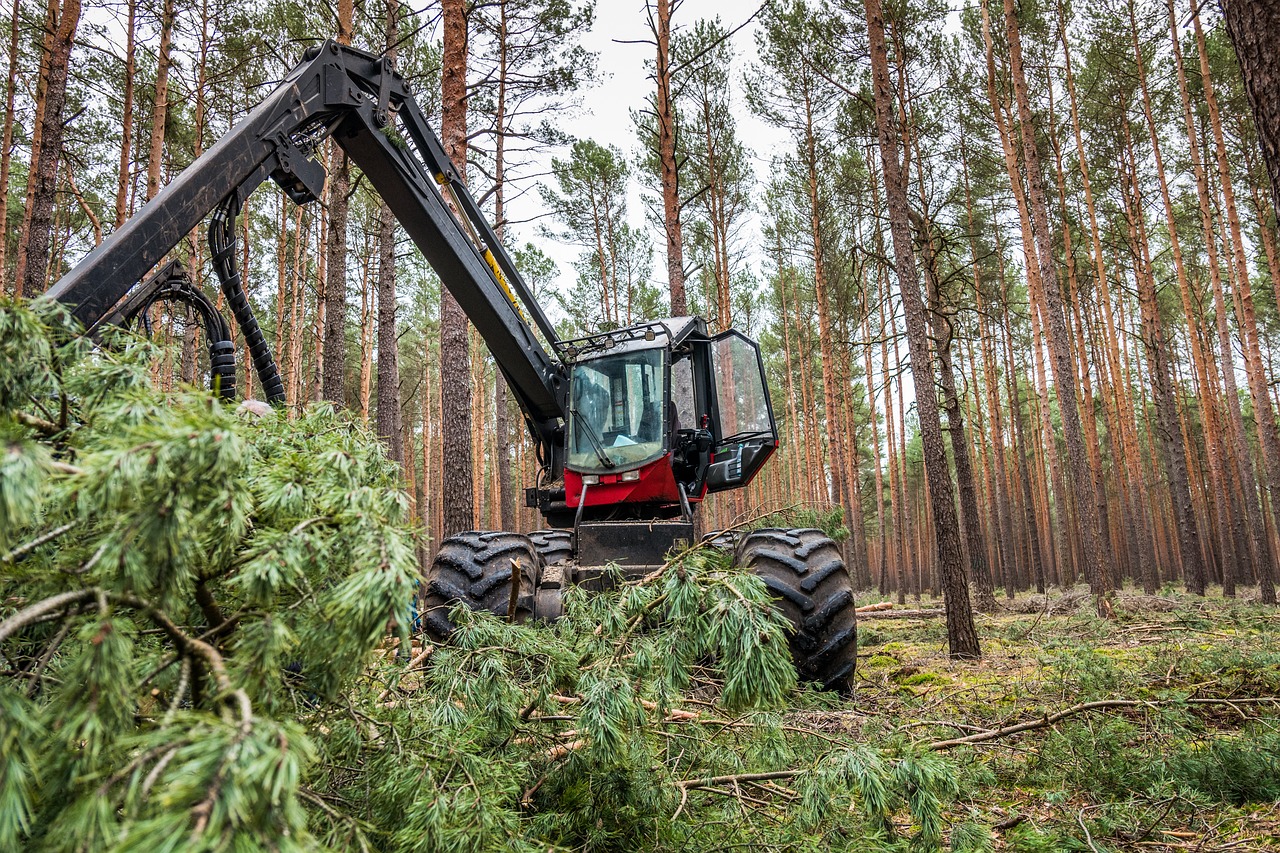
Site Selection
Choosing the right location for your rainwater harvesting system is crucial for maximizing its efficiency and effectiveness. Think of it as selecting the perfect spot for a picnic; you want to ensure that everything is just right for a successful day out! The first consideration should be the roof type from which you're collecting rainwater. Different roofing materials can affect the quality of the harvested water. For instance, metal roofs are generally better than asphalt shingles because they are less likely to leach harmful chemicals into the water. So, if your home has a metal roof, that's a big win!
Next, take a moment to analyze the rainfall patterns in your area. Understanding when and how much it rains can help you determine how much water you can realistically collect. If you live in a region that experiences seasonal rain, you might want to consider a larger storage solution to capture as much water as possible during those wet months. On the flip side, if you're in a drier climate, you may need to think about how to conserve and use that water efficiently.
Another vital factor is accessibility for maintenance. Your rainwater harvesting system will require periodic checks and cleaning to function optimally. Ensure that the site you choose allows easy access to all components, including collection surfaces, storage tanks, and filtration systems. Imagine trying to reach a high shelf in a grocery store; if you can’t get to it easily, it’s going to be a hassle!
When selecting your site, consider the following key aspects:
- Proximity to Downspouts: The closer your storage tank is to the downspouts, the less effort you’ll need to put into moving the water.
- Sunlight Exposure: While you want to capture rain, too much sunlight can lead to algae growth in your storage tank. Look for a balance!
- Land Slope: A slight slope can help direct water flow towards your collection system, making it easier to gather rainwater.
Finally, it’s essential to check local regulations regarding rainwater harvesting. Some areas have specific guidelines or restrictions that you must follow, so it's worth doing a little homework before you begin. Think of it like reading the fine print before signing a contract; you want to know what you're getting into!
In summary, site selection is not just about finding a place to set up your system; it’s about ensuring that every drop of rain counts! By taking the time to evaluate these factors, you'll set yourself up for success in your eco-garden journey.
Q: Can I use rainwater for drinking?
A: Yes, but it requires proper filtration and treatment to ensure safety. Always check local regulations and guidelines.
Q: How much rainwater can I collect?
A: This depends on your roof size and the average rainfall in your area. A larger roof can collect significantly more water.
Q: What maintenance is required for a rainwater harvesting system?
A: Regular cleaning of gutters, filters, and storage tanks is essential to prevent contamination and ensure optimal performance.
Q: Are there any incentives for installing a rainwater harvesting system?
A: Many local governments offer rebates or tax incentives for installing eco-friendly systems, so it’s worth checking with your local authority.
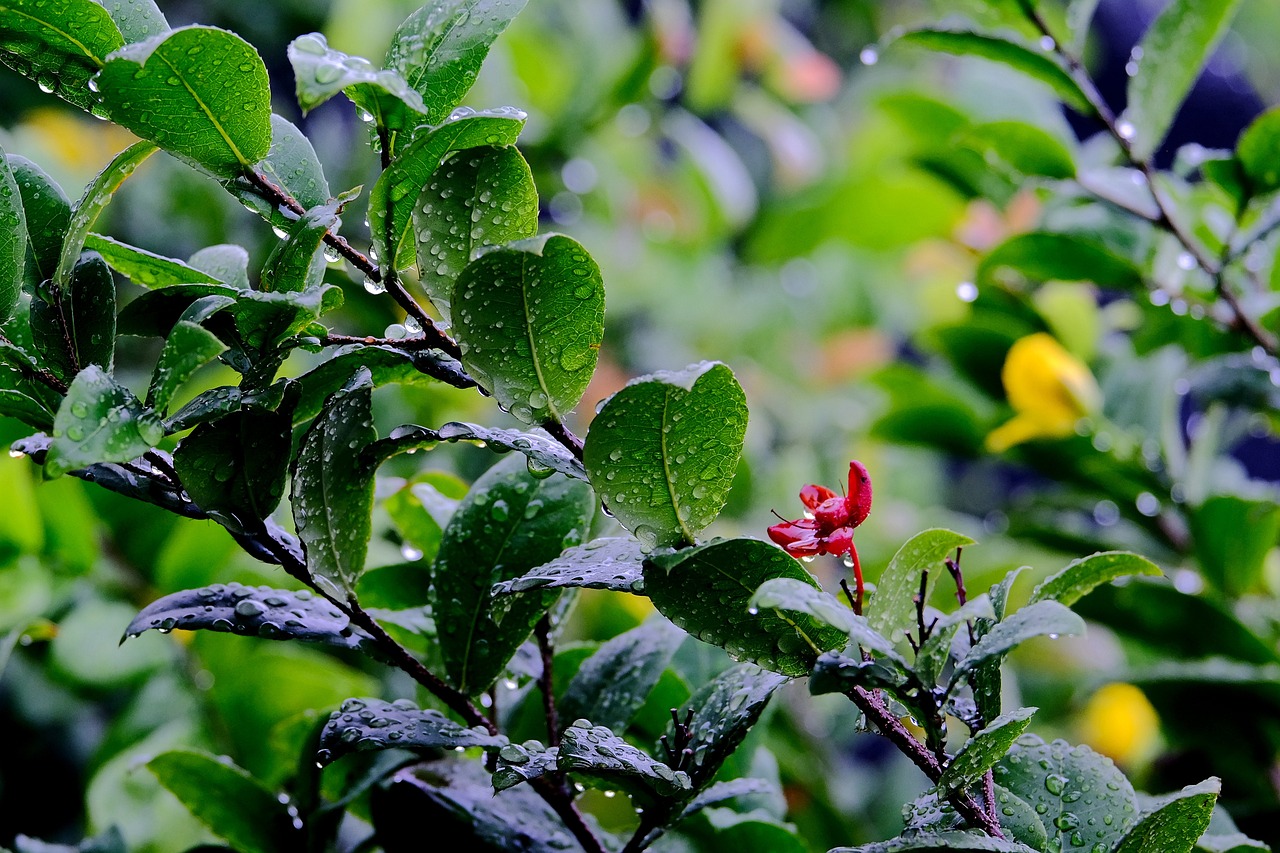
Assembly and Maintenance
Assembling your rainwater harvesting system may seem daunting, but with a little guidance, you'll find it's quite manageable. The first step in the assembly process is to gather all your components. You'll need items such as gutters, downspouts, a storage tank, and a filtration system. Make sure to have all the necessary tools at hand, like a drill, screws, and a wrench. Once you have everything ready, you can start the assembly process. Begin by installing the gutters along the edges of your roof. Ensure they are sloped correctly to allow water to flow freely towards the downspouts. This is crucial because even a slight misalignment can cause water to pool and create problems down the line.
Next, attach the downspouts to the gutters. These will direct the rainwater into your storage tank. It’s essential to choose a tank that is large enough to hold a significant amount of water, but also manageable for your space. When positioning the tank, consider its accessibility for maintenance and the proximity to your garden for easy irrigation. If you're using a filtration system, make sure to install it before the water enters the tank. This will help to keep debris and contaminants out of your stored rainwater, ensuring it remains clean and safe for your plants.
Once the system is assembled, regular maintenance is key to keeping it functioning efficiently. This includes checking the gutters and downspouts for clogs, cleaning the filtration system, and inspecting the storage tank for any signs of wear or leaks. A good practice is to schedule maintenance checks at the beginning of each season. During these checks, you should:
- Clear any debris from gutters and downspouts.
- Inspect the filtration system for blockages.
- Check the storage tank for leaks or cracks.
- Ensure all connections are tight and secure.
By staying on top of these maintenance tasks, you'll not only prolong the life of your system but also ensure that your eco-garden thrives with the clean, sustainable water it needs. Remember, a well-maintained rainwater harvesting system is like a well-tended garden: it requires attention and care to flourish. So, roll up your sleeves and enjoy the process; your plants will thank you!
1. How often should I clean my rainwater harvesting system?
It's best to clean your gutters and filtration system at least twice a year, ideally at the beginning of spring and fall. This ensures that your system remains free of debris that can hinder water flow.
2. Can I use rainwater for drinking?
While rainwater can be collected for many uses, drinking it requires proper treatment and filtration. It's advisable to consult local regulations and guidelines before using rainwater for potable purposes.
3. What size storage tank do I need?
The size of your storage tank depends on your garden's water needs and your local rainfall patterns. A general rule of thumb is to have a tank that can hold at least 1,000 liters for a small to medium-sized garden.
4. Will rainwater harvesting reduce my water bill?
Yes! By using rainwater for irrigation, you can significantly decrease your reliance on municipal water, leading to lower water bills.
5. Is rainwater harvesting legal in my area?
Laws regarding rainwater harvesting vary by location. It's important to check with your local government or water authority to ensure compliance with any regulations.
Frequently Asked Questions
- What is rainwater harvesting?
Rainwater harvesting is the process of collecting and storing rainwater for later use. This sustainable practice not only helps in conserving water but also reduces reliance on municipal water supplies, making it an eco-friendly solution for gardening and other uses.
- What are the benefits of setting up a rainwater harvesting system?
Implementing a rainwater harvesting system offers numerous benefits, including significant cost savings on water bills, reduced environmental impact, and improved soil health for your garden. By using collected rainwater, you can enhance your plants' growth while conserving precious freshwater resources.
- How can rainwater harvesting improve soil health?
Using harvested rainwater can enhance soil quality because it typically has lower salinity compared to tap water. This helps prevent salt buildup in the soil, promoting healthier plant growth and a more balanced ecosystem in your garden.
- What components do I need for a rainwater harvesting system?
A basic rainwater harvesting system requires several key components: collection surfaces (like roofs), gutters, storage tanks (such as barrels or cisterns), and filtration systems. Each component plays a vital role in ensuring efficient water capture and storage.
- How do I choose the right location for my system?
Choosing the right location is crucial for an effective rainwater harvesting system. Consider factors such as the type of roof, prevailing rainfall patterns, and accessibility for maintenance. Ideally, you want a spot that maximizes water collection while being easy to maintain.
- How often should I maintain my rainwater harvesting system?
Regular maintenance is essential for the longevity and efficiency of your rainwater harvesting system. It's advisable to check and clean your gutters and storage tanks at least twice a year, or more frequently if you live in an area with heavy foliage or debris.
- Are there any government incentives for installing a rainwater harvesting system?
Many regions offer government incentives or rebates for installing eco-friendly systems like rainwater harvesting. It's worth checking with your local authorities to see what programs might be available to help offset installation costs.
- Can I use harvested rainwater for drinking?
While it is possible to use harvested rainwater for drinking, it requires proper filtration and treatment to ensure safety. Most home systems are designed for irrigation purposes, so if you're considering potable use, consult local regulations and guidelines.



















